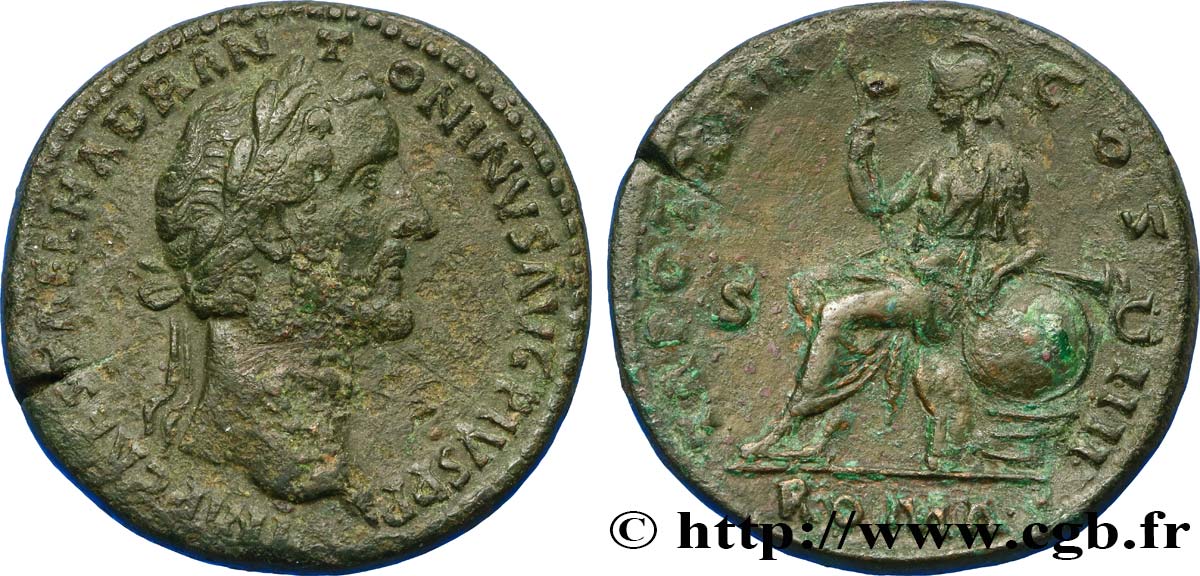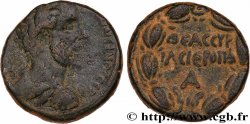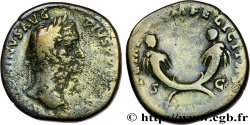brm_420618 - ANTONINUS PIUS Sesterce
550.00 €(Approx. 638.00$ | 484.00£)
Quantity
Add to your cart

Type : Sesterce
Date: 151
Mint name / Town : Roma
Metal : copper
Diameter : 32 mm
Orientation dies : 6 h.
Weight : 28,94 g.
Rarity : R3
Coments on the condition:
Très bel exemplaire au droit comme au revers avec un portrait de style fin. Patine marron foncé
Catalogue references :
Obverse
Obverse legend : IMP CAES T AEL. HAD. AN-T-ONINVS AVG PIVS P P.
Obverse description : Tête laurée d'Antonin le Pieux à droite (O*).
Obverse translation : “Imperator Cæsar Titus Ælius Hadrianus Antoninus Augustus Pius Pater Patriæ”, (L’empereur césar Titus Aelius Hadrien Antonin auguste pieux père de la patrie).
Reverse
Reverse legend : TR POT XIIII - COS IIII/ S|C// ROMA.
Reverse description : Rome drapée, assise à gauche, les ppieds sur une proue de navire, tenant une lance de la main droite, le coude gauche appuyé sur un bouclier décoré d’une louve.
Reverse translation : “Tribunicia Potestate quartum decimum Consul quartum, Roma”, (Revêtu de la quatorzième puissance tribunitienne consul pour la quatrième fois, Rome).
Commentary
Rubans de type 3. Titulature atypique au droit. Revers parmi les plus rares du monnayage d’Antonin le Pieux !.
Type 3 ribbons. Atypical title to the obverse. Reverse among the rarest in the coinage of Antoninus the Pious!
Type 3 ribbons. Atypical title to the obverse. Reverse among the rarest in the coinage of Antoninus the Pious!








 Report a mistake
Report a mistake Print the page
Print the page Share my selection
Share my selection Ask a question
Ask a question Consign / sell
Consign / sell
 Full data
Full data










